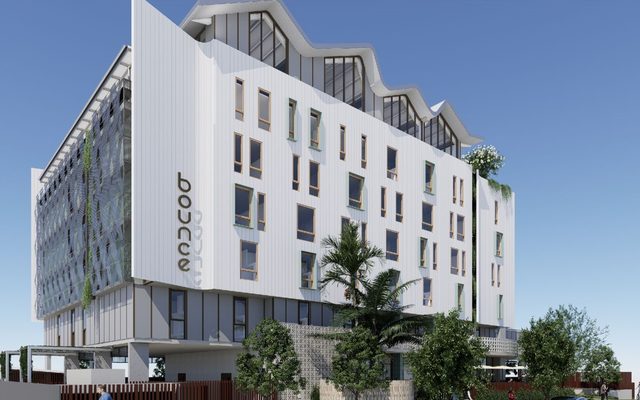This article is from the Australian Property Journal archive
COMMERCIAL real estate (CRE) debt has hit yet another all-time high, with the industrial sector driving demand as $7.5 billion was added over the past 12 months.
Curiously, the tourism sector was among the fastest growing in the total $265.5 billion pool. This was a 2.9% increase over the period.
Yarraport co-founder, Kathy Johnson said industrial debt has reached an all-time high at $42.8 billion, growing 10% over the year-long period and almost doubling over the past five years as the sector has become increasingly institutionalised.
“Demand for distribution and logistics centres is on the rise as online purchases have grown exponentially with institutional tenants requiring large distribution centres and warehouses,” she said.
Online retail trade in Australia continues to take a gradually larger share of overall spending with online sales accounting for 9% of total retail sales. Annual Australian online sales having grown by 160% over the year, and Australian consumers spent about $44 billion online over the past 12 months.
“The industrial market has also seen record low yields that traditionally have been a premium for retail and commercial properties,” she said.
Sandhurst Retail & Logistics’ acquisition and development of 100 hectares of developable industrial land in O’Herns Road, Epping in among the most recent major deals, while the headline transaction of the period was undoubtedly the $3.8 billion sale of Blackstone’s Milestone logistics portfolio to ESR and GIC.
The tourism sector saw some signs of recovery with its debt rising by 12% as demand for domestic travel intensifies.
“Although the latest restrictions will temporary dampen this sector again, we expect demand will return once people are allowed to move around again,” Johnson said.
The hotel sector is relatively small, with only $11.7 billion. Recent hotel deals include Centreland Group’s Quest in Collingwood as well as recent signings from IHG including proposed InterContinental Hotels in Sorrento and Parramatta.
Additional opportunities are also being created through repositioning and sale including the proposed sale of around $1 billion of Stamford Land’s hotel portfolio across Australia.
Plan1 Project Management & Consultancy director, Richard Jenkins said the number of Australian hotel rooms has reached an all-time high as at March, with the forecast expecting a record level of new hotel rooms delivered to the Australian market, off the back of healthy occupancy rates and record levels of tourists in 2019.
“Signs of improvement can be seen in the December quarter with Australians taking more overnight trips than at any time since the start of the pandemic,” he said. Intrastate continued to drive the recovery in domestic overnight travel in the period. While overnight trip numbers fell 26% to 21.7 million and spend fell 31% to $14.2 billion, this was an improvement on the previous falls of 42% and 53% seen in the September quarter.
“A number of hotel owners and operators have continued to place their faith in the domestic-led tourism recovery despite occupancy rates still well below 40%,” Jenkins said.
Melbourne’s occupancy rate remains anchored below 40% with room revenues down 65% at $53 a night compared with a year ago.
Johnson said debt held by foreign banks rose over the quarter and is now $3 billion higher than a year ago. Foreign banks account for 23.4% of total CRE debt, up from 20% two years ago.
Australian CRE debt held by foreign banks increased by 5% over the past 12 months, with debt exposure held by foreign banks in the office sector hitting all-time highs.
Total residential development debt, which includes high-density development and land subdivision debt, decreased and is now down to its lowest level since June of 2015.
The share of Australian CRE debt held by the major four banks – ANZ, NAB, CBA and Westpac – fell over the quarter to 71.0%, well down from its 10-year average of 79.2%.
The share held by the group peaked at 84.7% in 2013.
“In response to APRA’s revisions to ADI capital requirements, banks have been forced to reweight their portfolios to loans backed by income-producing real estate assets,” Johnson said.




